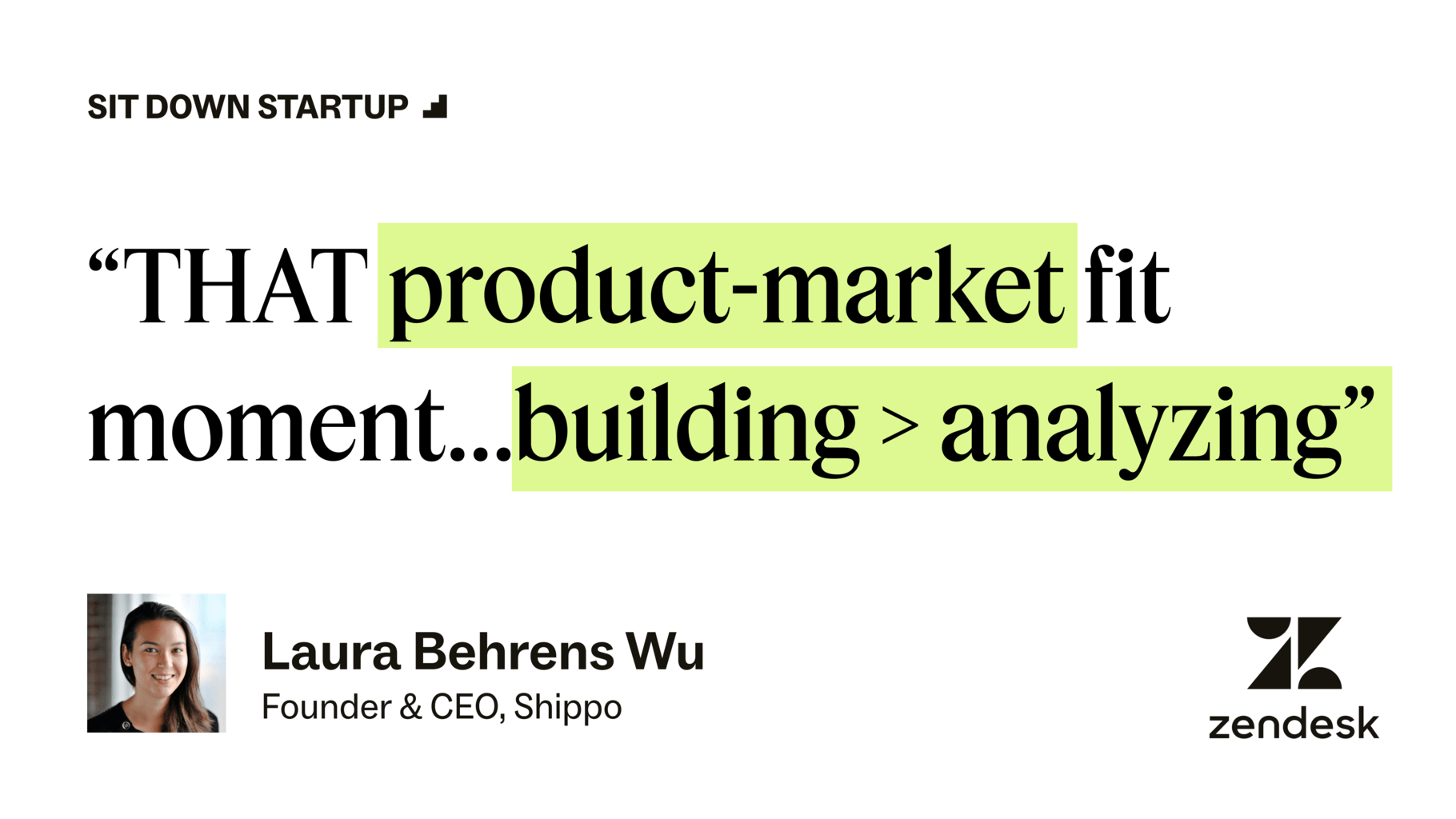Article • 4 min read
Achieving that product-market fit moment with Shippo’s founder, Laura Behrens Wu
Discover how Shippo navigated the challenges of customer churn, achieved product-market fit, and raised over $80 million to dominate the e-commerce shipping industry.
Por Adam O'Donnell, Host of the Sit Down Startup podcast
Última atualização em July 16, 2024
In this episode of Sit Down Startup, host Adam O’Donnell interviews Shippo Founder Laura Behrens Wu, who reveals insights from the pivotal moments that led to the staggering growth of the multimillion-dollar shipping platform. Discover Shippo’s journey through using customer retention tactics, achieving product-market fit, and conquering the Shopify App Store with a savvy inbound marketing approach. Tune in for a deep dive into the game-changing approaches Shippo employed to thrive in the competitive e-commerce space.
Experiencing—then recovering from—customer churn
Leading a startup is no easy task. As Behrens Wu says, “Every day, there are a few small lows that I think every founder has to go through. It’s truly a roller coaster ride.” In Shippo’s early days, the company acquired a fellow startup as a customer, which led to rapid growth and excitement. However, when this customer suddenly stopped shipping with Shippo, it became clear how much revenue depended on them.
The unexpected loss hit hard, especially as Shippo was preparing for a Series A fundraising round. The team’s numbers changed drastically, leading them to postpone the Series A round and raise a bridge round to stabilize.
That was Behrens Wu’s first experience with customer churn. Though it was painful, she now sees the value of the experience in hindsight: “At that time, we were too small to understand the importance of account management and how to take care of customers that are experiencing exponential growth.”
The Shippo team learned valuable lessons about maintaining customer relationships and serving the unique needs of mid-market companies. A few months after losing that customer, Behrens Wu won it back. She recalls, “We had a really nice, personal conversation with the startup that churned, and we were able to get them back.”
Problem-solving and achieving product-market fit
Before developing Shippo, Behrens Wu and her co-founder built an online store. She recalls, “We were trying to sell things on the internet. We realized that shipping is a true pain point for online merchants. It was pretty hard to do.” Seeing an opportunity, Behrens Wu built a website modeled after sites like Expedia and Kayak. “We had a website that you could click through, and instead of flights, you would see all the different shipping options.”
However, there was one issue. Unlike searching for a single flight, customers seeking shipping options may want to buy 200 shipping labels at once. Clicking through the interface for so many labels proved arduous and time-consuming. Recognizing this challenge, Behrens Wu looked at similar e-commerce infrastructure companies like Stripe and decided to go API-first. This approach suited Shippo because customers might need to generate hundreds of shipping labels at a time.
While it was a good idea, another issue arose. Behrens Wu shares, “We hit a roadblock because a customer that knows how to use an API is a company with developers employed there.” These companies, typically larger, were hesitant to work with a new startup. “The feedback was, ‘Well, who else is using your product? How many packages are going through your API? How credible are you?’ And at that point, we didn’t have anyone using us, so that was not a good answer.”
To solve Shippo’s problems, Behrens Wu decided to combine both iterations. “We built a web dashboard on top of our API and connected that to our Shopify app store,” she explains. During that time, Shopify had just launched its app store, and not many shipping solutions were available. When an online retailer used Shopify, the business could connect it to the Shippo web app and buy labels through Shippo. Behrens Wu says, “That was a product-market fit moment because once we built that Shopify app store connection, we just started seeing orders coming in organically.”
The importance of timing and clear business objectives
Timing can be a critical factor in the success or failure of a startup. For Shippo, the timing proved advantageous. When Shopify launched, Shippo quickly connected its web app to the e-commerce platform. “We were the first app on the Shopify app store, and that definitely helped—it was the right moment at the right time,” says Behrens Wu. With no competitors on Shopify, Shippo had a clear advantage.
Customer reviews also helped fuel Shippo’s growth. Behrens Wu shares, “The app store was a place for merchants to explore, and we had pretty good customer reviews early on. People left reviews, so more people came in.”
Shippo’s straightforward business objective played a key role, too. “What we are building with Shippo is a shipping platform that allows online merchants to ship like retail giants,” explains Behrens Wu. E-commerce has become an integral part of the consumer experience, and as it grows, so do the expectations placed on the online retailers that rely on it. Shippo offers these retailers the same services that their larger competitors have.
Behrens Wu says, “That’s part of the problem these days. Online businesses are competing with giants like Amazon, and shipping expectations have gotten really high. Our goal is to make sure all of our merchants can ship successfully. We connect them with different shipping providers and offer tracking, insurance, and other shipping-related services.”
